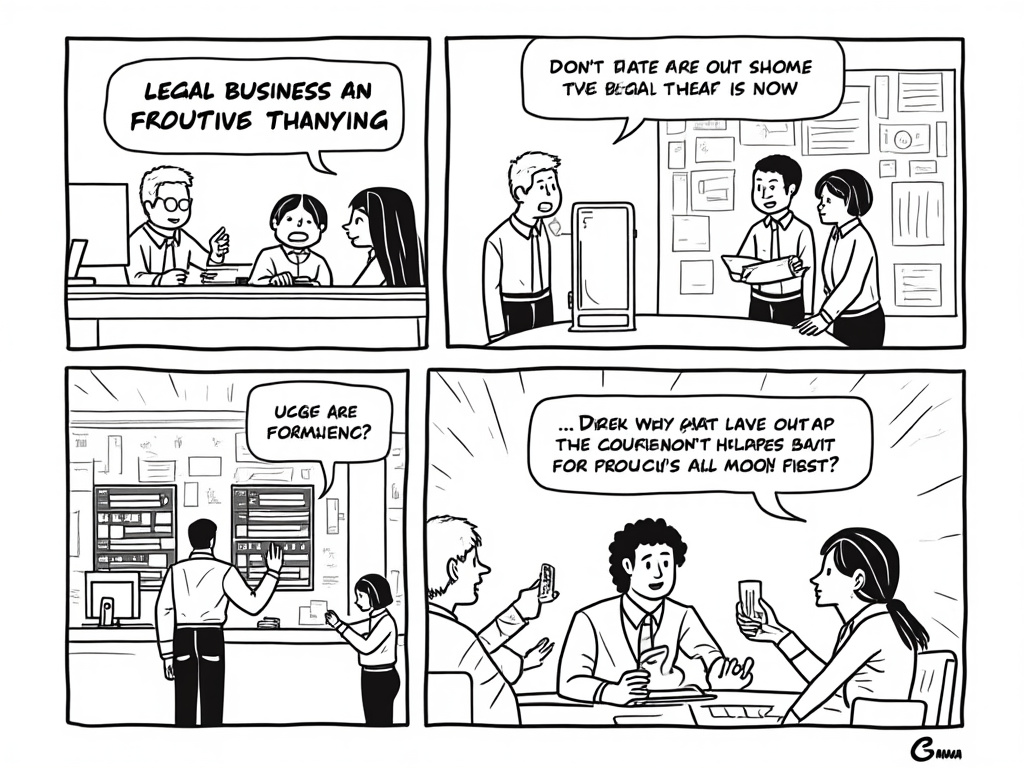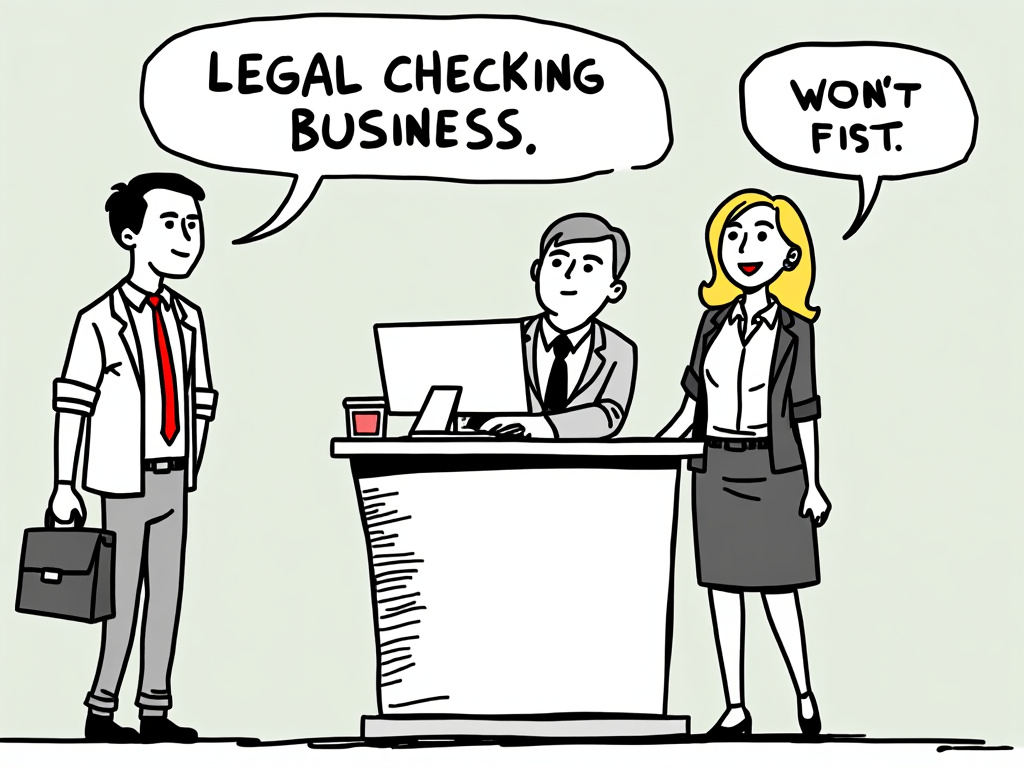
Due Diligence and Legal Checks: The Investor’s Strategic Safeguard
Reading time: 13 minutes
Table of Contents
- Introduction: The Critical Foundation of Investment Success
- What is Due Diligence? Beyond the Buzzword
- Key Components of Comprehensive Due Diligence
- Essential Legal Checks for the Prudent Investor
- Red Flags You Can’t Afford to Miss
- Streamlining the Due Diligence Process
- Real-World Case Studies: Lessons from the Field
- Leveraging Technology in Modern Due Diligence
- Your Investment Protection Roadmap: From Theory to Practice
- Frequently Asked Questions
Introduction: The Critical Foundation of Investment Success
Ever felt that persistent knot in your stomach just before finalizing an investment? That’s your intuition signaling the need for proper due diligence. In the high-stakes world of investing, that feeling isn’t paranoia—it’s self-preservation.
Let’s be candid: investment failures rarely come without warning signs. The difference between success and disaster often isn’t luck—it’s the thoroughness of your preliminary investigation. In my 15 years advising investors, I’ve witnessed brilliant opportunities turn into financial quicksand simply because someone skipped crucial verification steps.
Consider this: According to a 2023 Harvard Business Review study, 76% of failed investments showed identifiable red flags during proper due diligence that were either missed or ignored. The data is clear—comprehensive due diligence isn’t just a procedural box to check; it’s the foundation upon which successful investments are built.
This guide isn’t about creating paralyzing perfectionism in your investment approach. Rather, it’s about strategic risk management—knowing exactly where to look, what questions to ask, and how to interpret the answers you receive. Whether you’re a seasoned investor or making your first significant investment, the principles remain unchanged: verify, validate, and visualize potential outcomes before committing your capital.
What is Due Diligence? Beyond the Buzzword
Due diligence is more than a fancy term in investment circles—it’s the systematic process of investigating, auditing, and verifying facts before making an investment decision. Think of it as the investment equivalent of test-driving a car, checking its maintenance history, and running a vehicle history report before signing the purchase agreement.
At its core, due diligence serves three fundamental purposes:
- Risk Assessment: Identifying potential issues that could impact investment performance
- Validation: Confirming that the facts presented by the investment opportunity are accurate
- Value Determination: Establishing whether the investment is properly valued relative to its risks
As Warren Buffett famously stated, “Risk comes from not knowing what you’re doing.” Due diligence is precisely how you come to know what you’re doing—transforming uncertainty into calculated risk.
Quick Scenario: Imagine you’re considering investing in a promising SaaS startup with impressive growth metrics. Without proper due diligence, you might miss that their customer acquisition cost has been steadily rising, their churn rate is above industry average, or that a key pending patent application has received preliminary rejections. These factors dramatically change the risk profile and potential return of your investment.
Key Components of Comprehensive Due Diligence
Financial Due Diligence: Following the Money Trail
Financial due diligence is where you roll up your sleeves and examine the numerical heartbeat of a potential investment. Look beyond the polished financial presentations and dive into these critical elements:
- Financial Statement Analysis: Review at least three years of income statements, balance sheets, and cash flow statements. Look for trends, not just current performance.
- Revenue Quality Assessment: Is revenue recurring or one-time? Concentrated among few customers or diversified? Growing organically or through acquisitions?
- Debt Structure Examination: Analyze all outstanding debts, terms, covenants, and repayment schedules.
- Capital Expenditure Patterns: Are they investing adequately in future growth or deferring essential maintenance?
- Working Capital Efficiency: How efficiently are they managing receivables, payables, and inventory?
Pro Tip: Always request a detailed breakdown of “Other Expenses” or similar catch-all categories. These often hide significant issues that affect valuation.
When examining financial statements, remember the words of forensic accountant Howard Schilit: “Financial statements are like fine perfume—to be sniffed but not swallowed.” Look for inconsistencies between financial statements and other company documents or industry benchmarks.
Legal Due Diligence: Uncovering Hidden Liabilities
Legal due diligence is where potential time bombs are discovered and defused. This isn’t just paperwork—it’s protection.
Essential legal checks include:
- Corporate Structure Verification: Confirm legal establishment, ownership structure, and governance documents.
- Contract Review: Examine major contracts with customers, suppliers, partners, and employees. Look for change-of-control clauses, exclusivity arrangements, and unusual termination provisions.
- Intellectual Property Audit: Verify ownership of critical IP, status of registrations, and any challenges to validity.
- Litigation Landscape: Investigate current, pending, and potential legal actions. Don’t forget to check regulatory investigations.
- Compliance Status: Assess adherence to regulatory requirements specific to the industry and jurisdictions of operation.
Real-world example: In 2021, a mid-market private equity firm nearly acquired a manufacturing company before discovering during legal due diligence that the target company had been systematically misclassifying employees as contractors. The potential tax liability and penalties would have wiped out projected returns for the first three years. The deal terms were renegotiated with a substantial price reduction and indemnification provisions.
Operational Due Diligence: Assessing Business Functionality
Operational due diligence examines how the business actually functions day-to-day. It’s where strategy meets execution.
Key areas to investigate include:
- Business Model Validation: Verify that the theoretical business model works in practice.
- Supply Chain Resilience: Evaluate supplier relationships, dependencies, and contingency plans.
- Customer Relationship Quality: Go beyond retention statistics to understand satisfaction levels and expansion potential.
- Technology Infrastructure: Assess the scalability, security, and competitive advantage of technology systems.
- Management Team Capabilities: Evaluate the experience, track record, and succession planning for key positions.
“The most informative due diligence often happens outside formal meetings,” notes private equity veteran David Rubenstein. “Visit facilities unannounced. Talk to frontline employees. Call customers yourself. The gaps between presentation and reality tell the real story.”
Essential Legal Checks for the Prudent Investor
While financial and operational aspects often dominate due diligence discussions, legal checks are where catastrophic risks typically hide. Here’s your focused legal due diligence checklist:
- Corporate Governance Documents – Articles of incorporation, bylaws, operating agreements, board meeting minutes, and shareholder agreements often reveal restrictions, special rights, or obligations that affect your investment.
- Regulatory Compliance – Verify licenses, permits, and compliance history with regulatory bodies. Industries like healthcare, finance, and food service have particularly stringent requirements that can create material liabilities.
- Intellectual Property Portfolio – Confirm ownership of trademarks, patents, copyrights, and trade secrets. Verify that all employee and contractor agreements properly assign IP rights to the company.
- Contractual Obligations – Review major contracts for unusual provisions like exclusivity clauses, minimum purchase requirements, or change-of-control provisions that could trigger upon investment.
- Employment Practices – Examine employment policies, compensation structures, and any history of discrimination or harassment claims. These can indicate cultural issues and potential future liabilities.
Legal Check Spotlight: The “Material Adverse Change” Clause
Pay special attention to “Material Adverse Change” (MAC) clauses in contracts. These provisions can give parties an exit ramp if circumstances change significantly. During economic uncertainty, these clauses become particularly important. Recent court interpretations have made these more enforceable than historically assumed, making them a critical review item.
Quick Scenario: A technology investor I advised was evaluating a software company with an impressive client portfolio. During legal due diligence, we discovered that their standard customer agreement contained unusually generous service level guarantees with substantial financial penalties for non-compliance. These had never been triggered, but created a significant contingent liability that required renegotiation before closing the investment.
Red Flags You Can’t Afford to Miss
Experienced investors know that certain warning signs consistently predict troubled investments. Here are the highest-impact red flags to watch for:
- Inconsistent Explanations – When answers to the same question vary depending on who’s answering or when it’s asked, deeper investigation is essential.
- Limited Access to Information – Resistance to providing requested documents or making key personnel available often indicates something is being hidden.
- Frequent Leadership Changes – High turnover in executive positions or board members suggests internal conflicts or challenges that insiders recognize.
- Overreliance on Few Customers/Suppliers – Concentration risk can quickly destabilize otherwise healthy businesses if those relationships change.
- Pending Litigation or Regulatory Issues – Legal challenges, especially in core business areas, can divert resources and create existential threats.
- Complex Corporate Structures – Unnecessarily complicated organizational structures may be designed to obscure information or evade obligations.
- Misalignment Between Growth and Infrastructure – Rapid revenue growth without corresponding operational scaling often leads to quality issues and customer dissatisfaction.
“The biggest red flag in any due diligence process is the absence of problems,” observes venture capitalist Marc Andreessen. “No business is perfect. If you’re not finding issues, you’re not looking hard enough.”
Streamlining the Due Diligence Process
Due diligence needn’t be a bloated, inefficient exercise. The most effective investors use a systematic approach that maximizes insight while minimizing wasted effort:
The Tiered Approach to Due Diligence
| Phase | Focus Areas | Time Investment | Decision Point | Resources Required |
|---|---|---|---|---|
| Initial Screening | Business model, market opportunity, team assessment, financial overview | 3-7 days | Continue or abandon | Low (1-2 people) |
| Core Due Diligence | Detailed financial analysis, key legal documents, major customers/suppliers, competitive position | 2-4 weeks | Preliminary valuation and term sheet | Moderate (small team) |
| Confirmatory Due Diligence | Comprehensive document review, third-party verifications, site visits, reference checks | 1-2 months | Final investment decision | High (specialized experts) |
| Post-Closing Verification | Confirmation of representations, integration planning, immediate risk mitigation | First 100 days | Remediation if needed | Moderate to High |
By structuring due diligence into these distinct phases, you create natural decision points where you can abandon investments that reveal significant issues before committing substantial resources.
Technology-Enabled Efficiency
Modern due diligence leverages several technologies to improve accuracy and reduce time investment:
- Virtual Data Rooms (VDRs) – Secure document sharing platforms with permission controls, audit trails, and search capabilities
- AI-Powered Document Analysis – Machine learning tools that can review contracts, identify anomalies in financial data, and flag inconsistencies
- Project Management Platforms – Collaborative tools that track progress, assign responsibilities, and ensure nothing falls through the cracks
- Data Visualization Software – Tools that transform complex financial and operational data into intuitive visualizations that highlight trends and outliers
Pro Tip: Create a standardized due diligence playbook for each type of investment you typically make. This ensures consistency and prevents overlooking critical checks while allowing for customization based on specific circumstances.
Real-World Case Studies: Lessons from the Field
Case Study #1: The Missing Intellectual Property
Scenario: A venture capital firm was evaluating a $5 million investment in a biotech startup with promising early-stage results for a novel therapeutic approach.
Due Diligence Finding: During IP due diligence, investigators discovered that a founding scientist had previously conducted similar research at a university. The IP assignment agreements between the scientist and university were ambiguous regarding ownership of certain foundational concepts.
Outcome: The investment was paused while the startup negotiated a licensing agreement with the university. The final investment included a reduced valuation and milestone-based funding tranches contingent on securing clear IP rights.
Key Lesson: IP ownership issues are particularly common in companies founded by former academic researchers or employees from industry competitors. Always verify that all critical IP has clean chains of title.
Case Study #2: The Regulatory Time Bomb
Scenario: A private equity firm was finalizing the acquisition of a manufacturing company with facilities in multiple states.
Due Diligence Finding: Environmental compliance review revealed that one facility had been operating with an expired permit for handling certain chemicals, potentially exposing the company to significant fines and remediation requirements.
Outcome: The investor negotiated an escrow account funded by the seller to cover potential liabilities, along with specific indemnification provisions. They also developed a compliance remediation plan implemented immediately after closing.
Key Lesson: Regulatory compliance issues can create liabilities far exceeding their immediate cost to fix. Domain-specific experts should review compliance status in regulated industries.
Leveraging Technology in Modern Due Diligence
The due diligence landscape has been transformed by technological advancements. Here’s how cutting-edge tools are changing the game:
Adoption of Due Diligence Technologies by Investor Type
Source: Deloitte Investment Technology Survey, 2023
The most impactful technologies reshaping due diligence include:
- Data Mining & Analytics – Automatically extracting and analyzing structured and unstructured data to identify patterns, anomalies, and relationships not readily apparent through manual review.
- Natural Language Processing (NLP) – Using AI to review contracts, identify unusual clauses, and flag potential issues across vast document collections in hours rather than weeks.
- Blockchain for Verification – Leveraging distributed ledger technology to verify asset ownership, transaction histories, and chain of custody for critical information.
- Digital Reputation Analysis – Using specialized tools to scan social media, review sites, and online forums for sentiment about the target company, its products, and leadership.
As Diana Farrell, former CEO of the JPMorgan Chase Institute, notes, “The most innovative investors aren’t replacing human judgment with technology—they’re augmenting human expertise with tools that expand what’s possible within reasonable time constraints.”
Your Investment Protection Roadmap: From Theory to Practice
Due diligence isn’t just about avoiding disasters—it’s about creating the foundation for investment success. Here’s your actionable roadmap for implementing what you’ve learned:
- Develop Your Custom Due Diligence Framework
- Create baseline checklists tailored to your typical investment profile
- Define clear “go/no-go” criteria at each phase of investigation
- Identify which aspects require specialist expertise versus internal handling
- Build Your Due Diligence Team
- Identify internal resources with relevant expertise
- Establish relationships with specialized service providers (legal, accounting, cybersecurity, etc.)
- Create communication protocols for sharing findings and concerns
- Implement a Risk-Based Approach
- Focus deepest investigation on areas of highest potential impact
- Develop contingency plans for manageable risks
- Create a systematic method for translating findings into valuation adjustments
- Document the Process
- Maintain comprehensive records of all due diligence activities
- Create an auditable trail of decision-making rationale
- Establish a knowledge repository to improve future due diligence efforts
- Continuous Learning Loop
- Conduct post-investment reviews comparing due diligence findings with actual outcomes
- Refine your process based on lessons learned
- Stay current with evolving best practices and technologies
Remember, the most valuable aspect of due diligence isn’t just the protection it provides—it’s the deeper understanding of your investment that enables you to create value post-transaction. The insights gained during thorough due diligence often become the blueprint for your value creation strategy.
As you refine your approach, consider this perspective from legendary investor Charlie Munger: “Invert, always invert. Turn a situation or problem upside down. Look at it backward. What happens if all our assumptions are wrong?”
How might you apply this inversive thinking to your next investment? What if you examined not just what could go wrong, but what would need to go right for the investment to exceed expectations? This balanced approach transforms due diligence from a defensive exercise into a strategic advantage.
Frequently Asked Questions
How long should proper due diligence take?
The timeline varies significantly based on investment size, complexity, and availability of information. For smaller investments under $1 million, thorough due diligence might take 2-4 weeks. Mid-market transactions typically require 1-3 months, while complex or large-scale investments may need 3-6 months for comprehensive investigation. Rather than rushing to meet an arbitrary deadline, focus on addressing all material risk areas. Remember that proper due diligence often reveals negotiation leverage that more than compensates for the time invested.
What’s the difference between due diligence for public versus private companies?
Public company due diligence benefits from standardized financial reporting, regulatory filings, and analyst coverage, allowing investors to focus on strategic fit and future prospects. Private company due diligence requires more fundamental verification of basic information, governance structures, and financials. You’ll typically need to investigate aspects that would be publicly disclosed for listed companies, including ownership structures, litigation history, and detailed financial performance. Private company investigations also place greater emphasis on customer interviews, management assessment, and operational details that aren’t accessible through public sources.
How do I perform due diligence when the target company has limited documentation?
Start by understanding why documentation is limited—is it due to the company’s stage, industry norms, or potential red flags? For early-stage companies, focus on fundamentals: verify intellectual property ownership, confirm key customer relationships through direct contact, and thoroughly assess the founding team’s background and capabilities. Implement progressive disclosure, where initial findings determine areas requiring deeper investigation. Consider engaging specialized investigators for background checks on key personnel and market validation. Most importantly, document all verbal representations and incorporate them into binding representations and warranties in your investment agreement, with appropriate indemnification provisions tied to your findings.
The information provided in this article is for educational purposes only and should not be construed as legal, financial, or investment advice. Always consult with appropriate professionals before making investment decisions.

Article reviewed by Adrian Sokolov, Post-Soviet Industrial Assets | Revitalizing Manufacturing Zones, on May 15, 2025





